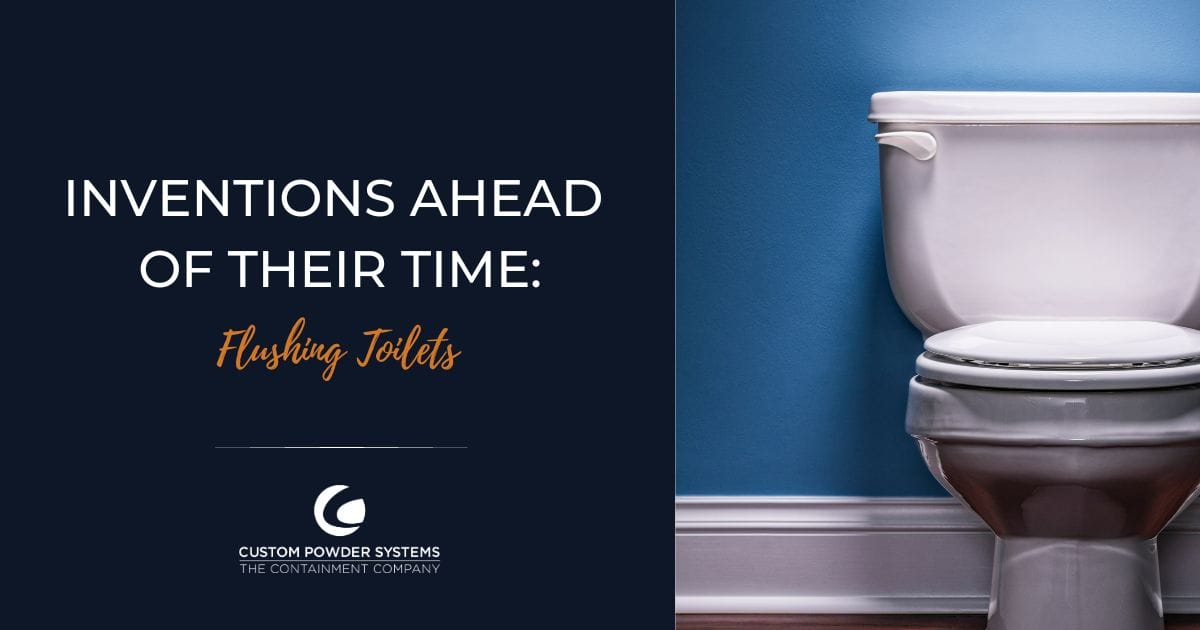Have you ever used the expression “going to the John” and wondered who John is and why his name is synonymous with toilets?? Well, the man in question is, in fact, Sir John Harington – the inventor who created flush toilets nearly 500 years ago!
The invention of toilets that flush, often referred to as flush toilets or water closets, marked a significant milestone in human sanitation practices. These ingenious devices have revolutionized how we handle waste and maintain cleanliness in our living spaces.
John Invents the “John”
The concept of water-based waste disposal dates back to ancient civilizations. Early iterations of flush toilets can be traced back to 2,500 BCE in the Indus Valley Civilization, where intricate drainage systems were developed to remove waste from homes and cities. Similarly, the ancient Romans employed advanced sewage systems, showcasing their engineering prowess.
However, the modern flush toilet as we know it today was refined and popularized during the late 19th and early 20th centuries. One of the key figures in this development was Sir John Harington, an English courtier, and godson of Queen Elizabeth I. Motivated by his concern for hygiene and the desire to improve the sanitary conditions and inspired by the advanced sewage systems he encountered during his travels in Europe, Harington sought to create a similar solution that could be implemented in households. So, in 1596, he invented the “Ajax.”
The “Ajax” was an innovative design consisting of a water closet, a porcelain basin with a seat, and a water tank mounted above. To flush, a valve at the bottom of the tank was opened, allowing water to rush into the bowl, carrying away the waste through a pipe connected to the sewage system. Harington’s invention was also equipped with a trap mechanism that prevented foul odors from escaping into the room.
Cleaning Things Up
While Harington’s “Ajax” was a notable invention, it was primarily embraced solely by the wealthy and elite, who could afford such luxuries. Despite its potential benefits, the widespread adoption of flush toilets did not occur during Harington’s time. It would take several more centuries and the contributions of other inventors for flush toilets to become a standard fixture in households worldwide.
In the following years, notable advancements were made in toilet design and plumbing systems leading to the eventual popularization of flush toilets. The innovation of the siphon flush mechanism, credited to Joseph Bramah in the early 1770s, greatly improved the efficiency of waste removal. Soon thereafter, Alexander Cummings, a watchmaker from Scotland, received a patent for the “S” trap, a bend in the pipe beneath the toilet that created a water seal to prevent odors from escaping. In the 19th century, Thomas Crapper (sound familiar?), an English plumber and entrepreneur, introduced more design improvements, such as the ballcock mechanism, which allowed for more efficient water tank refilling.
Flush toilets were a notable invention primarily because they provided a more hygienic and convenient alternative to traditional waste disposal methods. Before their introduction, chamber pots, open pits, and rudimentary outhouses were the prevailing means of waste management, often resulting in unsanitary conditions and foul odors. This innovation offered a more sanitary and efficient solution by using water to remove waste, thus significantly reducing the spread of diseases and improving overall hygiene. Additionally, the convenience and comfort of having an indoor toilet with a flushing mechanism added convenience and privacy to personal sanitation practices.
Waste Not, Want Not
Since their inception, flush toilets have undergone significant developments to enhance their functionality and efficiency. Innovations such as the siphon flush mechanism and dual-flush systems have emerged to address concerns about water conservation and environmental impact. There has been a growing focus on developing sustainable toilet technologies. New water-efficient designs, waterless systems, and waste treatment options are explored to minimize water usage and improve sanitation in regions with limited access to clean water and sanitation infrastructure.
The widespread adoption of flush toilets has profoundly impacted public health and sanitation. By efficiently removing waste and preventing its accumulation, flush toilets have played a crucial role in curbing the spread of waterborne diseases and improving overall hygiene standards. This invention has also had a transformative effect on urban areas, allowing for denser populations and contributing to the growth and development of cities, supported by advancements in plumbing infrastructure, expansion of water supply networks, and establishment of sewage systems.
The invention of flush toilets marked a significant leap forward in human sanitation practices, and they have become an essential element of modern living, impacting our daily routines and providing us with a higher standard of comfort and convenience. Their presence in homes, offices, public facilities, and other spaces may sometimes be taken for granted today. Still, it is worth recognizing this invention’s significance in revolutionizing our approach to waste management.
To learn about more inventions ahead of their time, check out these stories about vending machines, electric cars, and NASA tools.
To learn more about Custom Powder Systems and the art of engineering, sign up for our newsletter.







